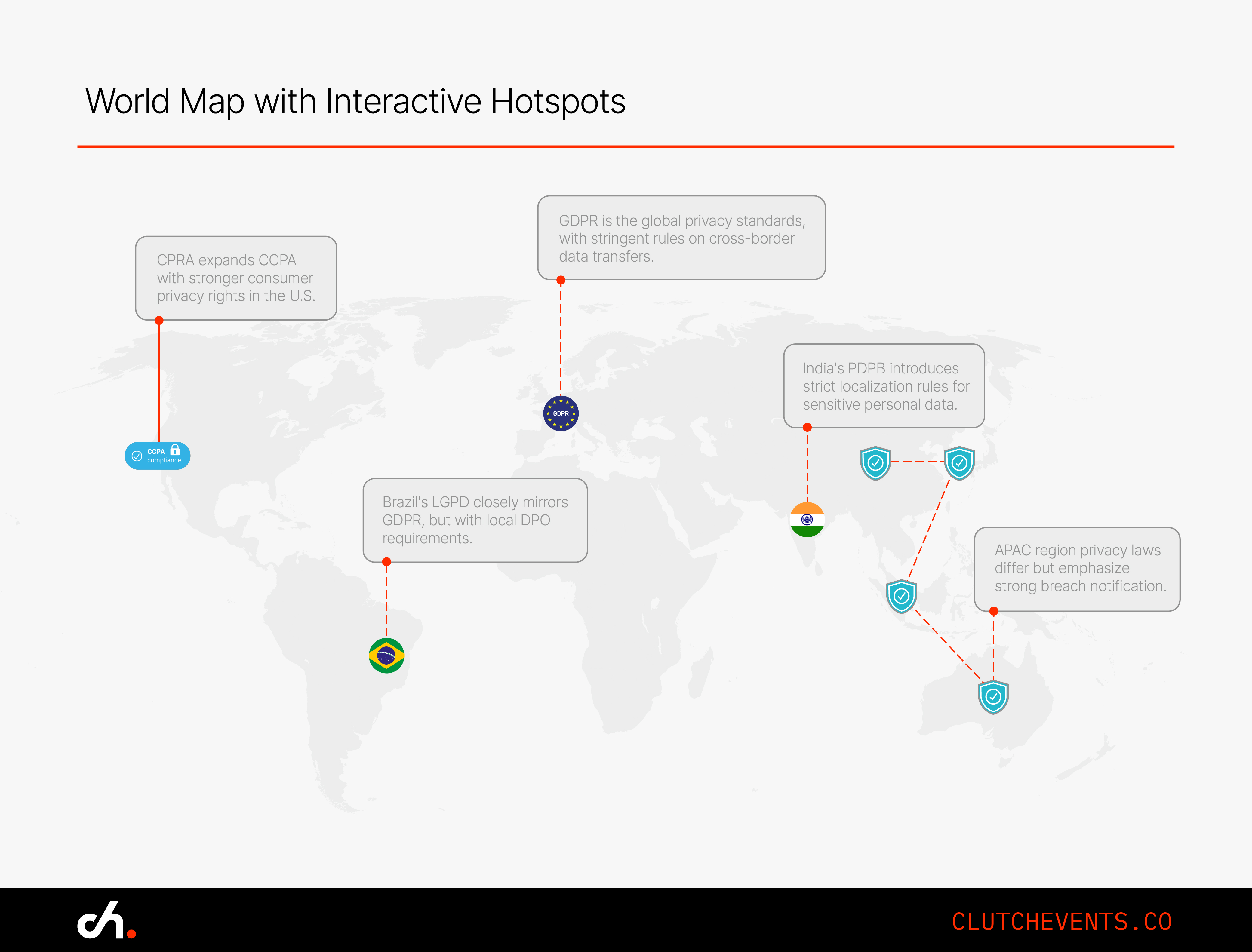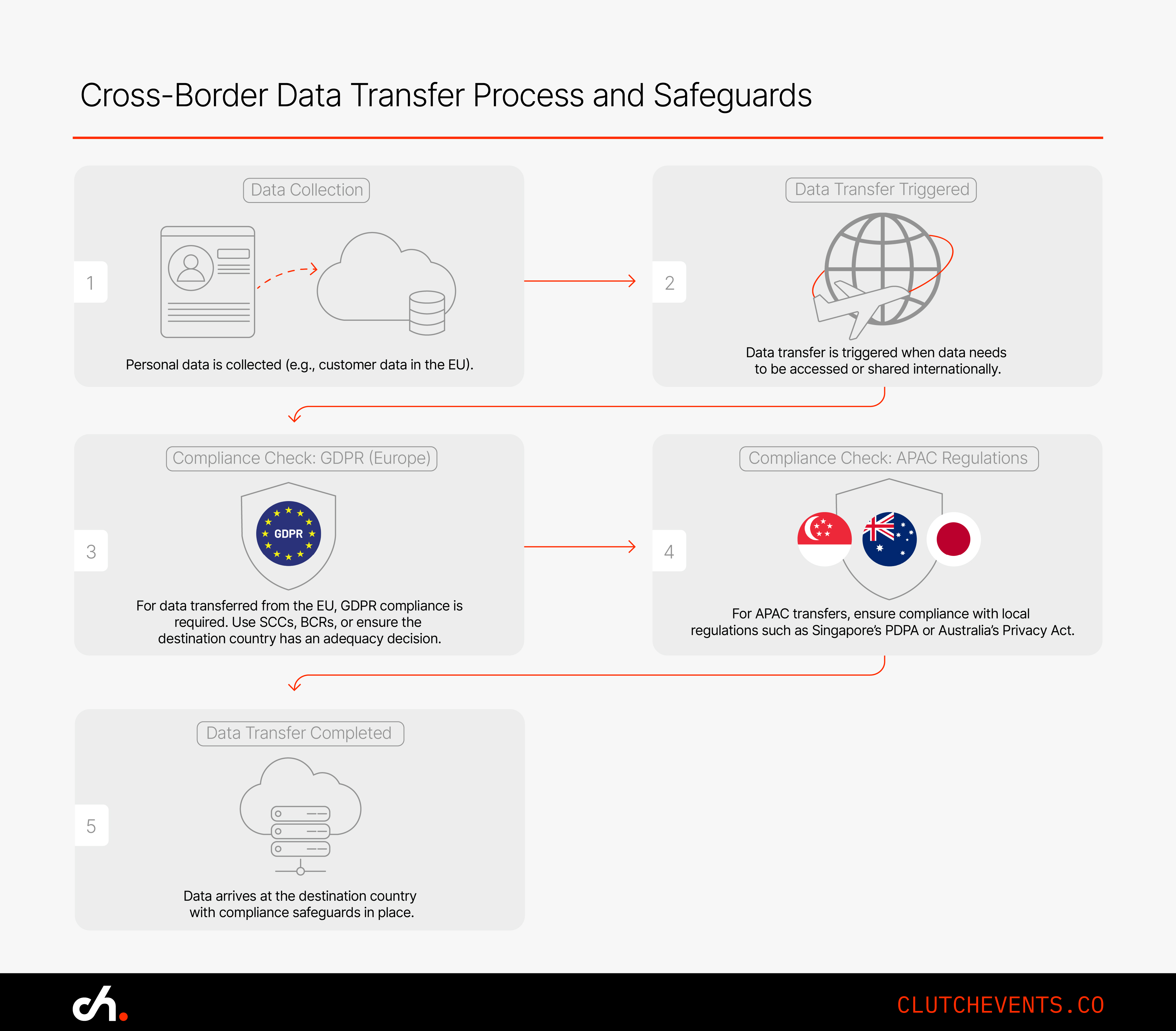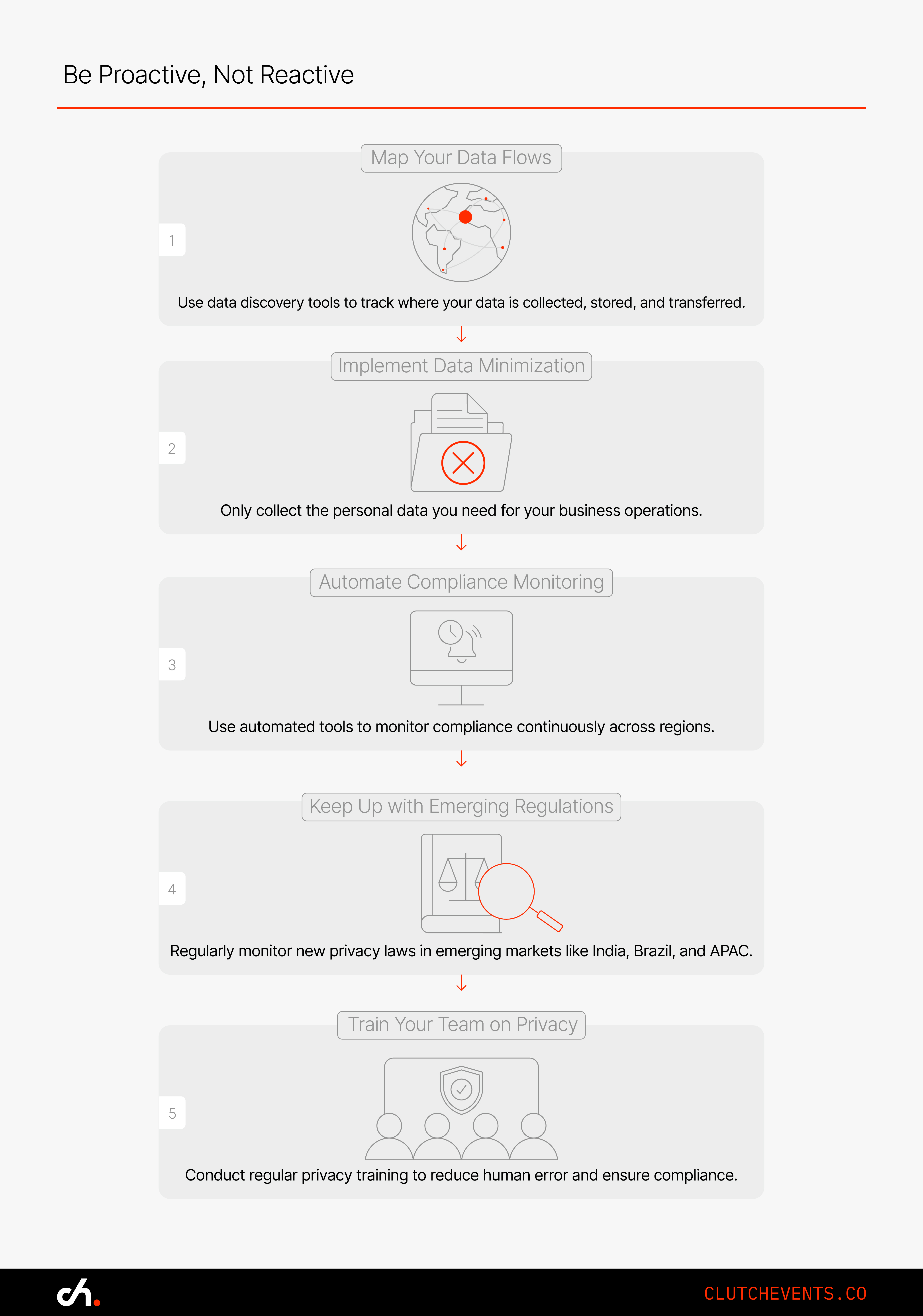In the world of data protection, the pace of regulatory change isn’t slowing. For Data Protection Officers (DPOs), this means staying ahead of evolving requirements across jurisdictions. Whether dealing with GDPR, CCPA, or upcoming legislation across APAC and beyond, complexity is increasing. The expectation is clear: DPOs are the go-to experts when new rules arrive.
This briefing explores how to build a proactive compliance framework that does more than just meet today’s laws. It prepares your organisation for what’s next.
Understanding the Global Privacy Landscape: What’s Changing?
Let’s start by looking at how the landscape is shifting. While the GDPR remains foundational, other regions are rapidly introducing their own privacy laws, each with unique enforcement models and data handling rules.
Regulations Expanding Across Continents:
- In the United States, the California Consumer Privacy Act (CCPA) and its successor, the CPRA, now define how businesses handle personal data. These laws extend beyond California, shaping data practices across the country.
- Brazil’s LGPD builds on the GDPR model, with an emphasis on transparency and assigning in-country DPOs. For any company working with Brazilian users, these are not optional.
- APAC nations are introducing their own rules: Singapore’s PDPA, Australia’s updated Privacy Act, and South Korea’s PIPA each introduce strong consumer protections and mandatory breach notifications.
- India’s Personal Data Protection Bill (PDPB) is poised to bring new challenges. Among them is data localisation, which could require businesses to build local storage infrastructure, separating India’s data from global systems.
The takeaway is simple: Regulatory expectations are diversifying. DPOs need situational awareness across regions, and a framework to manage this complexity.

Key Challenges for DPOs in the Next Wave of Privacy Regulation
Managing Cross-Border Data Transfers
Transferring personal data between jurisdictions creates one of the most difficult compliance challenges. For example, moving data from the EU to the US requires strict legal safeguards. Standard Contractual Clauses (SCCs) are the most common mechanism post-Schrems II, but these remain under regulatory scrutiny. Companies must also consider emerging alternatives, such as Binding Corporate Rules (BCRs) or seeking adequacy decisions.
Data transfer frameworks are changing quickly. What works today may not work tomorrow. DPOs must be able to identify when transfers occur, evaluate the legal basis, and implement safeguards dynamically.

Data Localization Requirements
Countries including India and China are tightening requirements around where personal data can be stored and processed. These data localisation laws require certain data to remain within national borders. For global businesses, this can mean building data centres in-country or modifying cloud infrastructure, often at significant cost. The fragmentation this introduces also complicates policy enforcement and incident response.
Adapting to Expanded Data Subject Rights
New laws are strengthening individual rights. Beyond the well-known rights under GDPR, other regions are adding their own. This includes new interpretations of the right to deletion, data portability, and limits on algorithmic processing.
The operational challenge lies in handling requests across regions, each with different response timeframes and verification standards. Without automated systems, manual fulfilment becomes unmanageable at scale.
Rising Enforcement and Legal Exposure
Penalties are growing. GDPR enforcement actions already reach into the hundreds of millions of euros. California and Brazil are following suit. Regulatory investigations now launch faster and with fewer warnings. DPOs must ensure that compliance isn’t just documented, but provable, with controls and audits in place at all times.
Actionable Steps to Future-Proof Your Privacy Strategy
Map Your Data Flows
Know where your data lives and how it moves. This foundational step is critical for managing data transfer compliance and identifying where localisation rules might apply. Tools such as BigID, OneTrust, or Collibra can assist in visualising and tracking data through its lifecycle.
Implement Data Minimisation
Collect only the personal data you need. Data minimisation reduces your exposure and simplifies compliance. Performing regular audits can help identify what data is essential and what can be removed from your systems.
Automate Compliance Monitoring
Given the number of jurisdictions and frequency of legal change, manual compliance is not feasible. Platforms like TrustArc or OneTrust offer automated rule tracking and real-time auditing capabilities. This gives DPOs visibility across business units and supports faster responses to investigations or breaches.
Leverage Technology to Build Resilience
Privacy Management Platforms
Centralised platforms consolidate privacy operations. They enable tracking of data subject access requests, ensure consistent application of consent rules, and provide dashboards for compliance status.
Consent Management Tools
These tools manage the lifecycle of user consent across channels. Whether for web tracking, mobile apps, or service enrolments, they give users control while maintaining detailed audit logs.
Data Discovery and Classification
Before you can protect sensitive information, you must be able to locate it. Data discovery platforms use scanning and classification to identify where personal and sensitive data exists within your systems. This is especially valuable in hybrid and multi-cloud environments.
Preparing for What’s Next
Stay Informed About Legislative Trends
Privacy law is a moving target. Subscribe to regulatory tracking services, attend IAPP briefings, and participate in global working groups. Staying ahead of legislative shifts gives you time to adapt your controls before enforcement begins.
Build Privacy Into Organisational Culture
Privacy by Design is becoming standard practice. Conduct Privacy Impact Assessments (PIAs) at the start of every product launch or vendor engagement. Make privacy a core part of your product lifecycle, not a final checkpoint.
Train Teams on Privacy and Compliance
Technology alone cannot prevent breaches. Human error remains a major source of compliance failures. Training employees on privacy basics, regional regulations, and incident response protocols strengthens your first line of defence.
Conclusion: Be Proactive, Not Reactive
Privacy regulations are becoming more complex, more global, and more aggressively enforced. For DPOs, this moment is not just a compliance challenge, it is a strategic leadership opportunity. By taking steps now to map data, reduce exposure, and automate monitoring, you build a privacy program that’s prepared for whatever comes next.
Quick Reference Checklist:
- Map your data flows to understand where personal data is collected, stored, and transferred
- Perform regular audits to eliminate unnecessary data and enforce minimisation
- Deploy automated tools for compliance tracking and DSAR management
- Monitor global legislation to anticipate upcoming changes
- Embed privacy impact assessments into business processes
- Train all employees on data handling responsibilities
These actions allow you to operate with confidence across jurisdictions, proving to regulators, partners, and customers that your organisation takes privacy seriously and is ready for the future.

Related Resources
Find your Tribe
Membership is by approval only. We'll review your LinkedIn to make sure the Tribe stays community focused, relevant and genuinely useful.
To join, you’ll need to meet these criteria:
> You are not a vendor, consultant, recruiter or salesperson
> You’re a practitioner inside a business (no consultancies)
> You’re based in Australia or New Zealand



